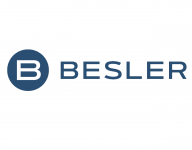If there is one thing that revenue cycle management hates to see, it is a growing upward trend in A/R. A buildup can overwhelm even the most experienced of staff and lead to feelings of exasperation and frustration with no clear solution in sight. When hospitals start to see a trend of their A/R increasing, there are a number of different factors that management can look to in order to explain the increase. Oftentimes, the underlying problem lies in an equally upward trending of A/R follow-up backlog, which can seem intimidatingly overwhelming for staff to tackle. Revenue cycle management may feel like they are constantly chasing dollars and seeing little to no results for their efforts. However, if an increase in A/R is indeed due to a growing backlog of A/R follow up, there are solutions that healthcare organizations can leverage in order to stop the bleeding. These solutions often require organizational transformation and involve an investment of time, resources, technology and education of staff. However, the investment that hospitals take now will almost certainly pay off exponentially in the future.
In order to best tackle a growing A/R follow-up backlog, both the situation and parameters must be defined and well understood so that appropriate steps are taken. The first step that executive leadership should take involves diving into the data in order to better understand the systemic issues contributing to the backlog. By strategically analyzing the correct data, management can derive information about where the majority of the claims are, which can include factors such as Discharge Not Final Billed (DNFB), Discharge Not Submit to Payer (DNSP) awaiting edits, rejections, or sitting with the payer. Once this information has been identified, additional sampling of accounts can determine the cause of payment delay. It may be that the payer is waiting for additional information from the hospital, or that departments are depending on the action of another – such as coding, nurse review, or simply claims awaiting write-off. Another key understanding involves extracting data by payer, which can be further broken down by age bucket and outstanding balance. This can help organizations to identify the more problematic payers, which can inform decisions around payer escalation strategies discussed in further detail later.
A second crucial step that organizations can take to reduce backlog is to critically evaluate current workflow processes used to follow-up on claims. Oftentimes, an understanding of processes can result in the identification of “quick hits”, or key areas where organizations can take immediate action, while awaiting some of the longer-term changes to come to fruition. Some questions to ask include whether or not PFS staff are working the same payer and/or similar claims. If not, aligning and organizing reps by payer can result in increased efficiency and reduced time for account resolution. Practices should also understand how workflow is distributed and whether or not a workflow technology solution is needed to increase efficiency and strategically prioritize A/R follow-up. Finally, management should have a firm understanding of current staff skill levels and should appropriately identify gaps and areas for educational opportunities so that reps are equipped with the necessary skills to bring in cash and resolve outstanding A/R.
The final step that organizations should take in order to define the problem is to evaluate the payer escalation process. Organizations can have highly trained staff and useful bolt-on solutions, but if payer escalation processes are lacking, they will most certainly continue to see their A/R on the rise. Current processes with payer representatives should be evaluated and management should identify ways to collaborate and improve upon communications between the hospital and various payers. If a payer representative is unable to process certain claims (e.g. those above a certain dollar amount), staff must work to identify the appropriate path for escalating these claims (e.g. through managed care). Even if an organization has a longstanding relationship with a payer, there may be areas for improvement and ways to approach a change in escalation processes that does not damage these relationships and that can result in an ease in communication for all parties.
Once hospitals have adequately addressed the fundamental issues listed above and have defined the situation, it is time to move towards the future. To some this may seem like a huge endeavor to undertake, but fortunately, most strategies mentioned in this article can be appropriately managed with the right technology via a high performing workflow driver.
Depending on gaps identified and the areas for improvement, there are various A/R strategies that organizations can quickly and efficiently implement using a workflow driver. For instance, in order to maximize workflow and optimize utilization of reps, management should eliminate “switching” between the staffs’ workflow as much as possible. A consistent workflow should be developed and reps should be assigned accounts in a way that reduces selection bias, so that they are not picking and choosing which accounts they work. With a workflow driver, management can create workstreams based on financial class/payer, aging bucket, responsible area, level of effort/skills needed, etc. and assign each of the workstreams to an individual rep or a group of reps, thereby, controlling the accounts each rep or group of reps work. Work streams should be assigned based on experience, performance, and skillset of different reps. For example, if temp employees are being brought in to reduce backlog, they should be focused on lower risk areas, such as low dollar claims. More experienced reps can be assigned to high dollar accounts, which should be worked on a more frequent basis. An appropriate high dollar threshold typically is in the range of balances > $50,000. Other accounts that must be resolved, such as write-off approvals and credit balances, should be strategically assigned, so that they are being worked in a steady cadence on a regular basis.
It is also best practice to develop a quality assurance program, preferably with randomly selected accounts designated for review. Certain A/R workflow drivers will have functionality to automatically select accounts to be included in the “QC” or quality control; these accounts can be scored by senior reps and managers on an objective scale with yes/no questions. The percentage of accounts selected for quality review can be based on an individual’s average quality score (i.e. the lower a reps score, the higher percentage of accounts selected for review and vice versa). This quality score can then be incorporated into an employee’s overall evaluation so that skillset and performance of staff can be measured on an ongoing basis.
Management can also create a SWAT team of experienced team members for special projects. They can fill in for staff who are on vacation/leave, provide audit support, and help in targeted backlog reduction efforts. During special projects such as “claims events” where large volumes (typically 500+) of claims are scrubbed and reviewed with a specific payer, be mindful to not remove regular core team from working regular claims and instead leverage SWAT staff. Pulling the normal team runs the risk of addressing a problem in the short term, but setting the team up for a larger mess six months down the line.
Additionally, metrics should be monitored and shared with the team, preferably on a weekly basis to ensure consistency of performance and to identify problematic areas as they arise. Both managers and staff should have a firm understanding on what is being shared with executive leadership so that they can perform and tackle A/R appropriately. Metrics and reporting can be further enhanced by having the right tools to allow your managers to pull real-time reports to assess current progress and track results. This can empower managers to strategically review and better understand the breakdown of their A/R, allowing them to take control of their teams’ performance by developing “quick hit” opportunities and moving towards a brighter future state.
Lastly, celebrate the small successes. When an organization makes the decision to strategically reduce A/R and follow-up backlog, changes will occur that impact staff through a shift of roles and responsibilities. By developing creative opportunities for teams to showcase their efforts with leadership, staff can experience the benefits – and not the burden – of these changes. Combining this with a comprehensive assessment of the situation through analysis of data, workflow processes, and payer escalation protocols, organizations can begin to enact and drive forth change that will reduce a formerly overwhelming situation.
© 2021 PwC. All rights reserved. PwC refers to the US member firm or one of its subsidiaries or affiliates, and may sometimes refer to the PwC network. Each member firm is a separate legal entity. Please see www.pwc.com/structure for further details. This content is for general information purposes only, and should not be used as a substitute for consultation with professional advisors.


















